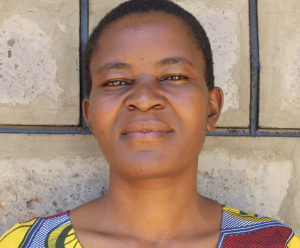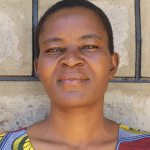Hombala Secondary School was opened because of primary students' need for further education. Parents and the community at large worked with a sponsor to start-up a secondary section in 2006 when the primary school donated three classrooms. They started with three voluntary teachers and 16 students.
In 2008, Free Day Secondary (FDS) was introduced by the government. All parents transferred their children to secondary schools that enrolled in FDS. Hombala was not registered at that time, so they had to shut down because nobody wanted to pay fees.
The school was finally registered in 2010 and opened again to 26 students. It has grown to now have an enrollment of 363 students. But despite the growth here, the school hasn't been able to establish a reliable clean water source.
There is one plastic tank that can store 10,000 liters of water, but it was donated so that the school could have a working science lab. When the school takes water for this tank and uses it for drinking and for cooking school lunch, it lasts no longer than a week before it requires heavy rains.
That being the case, students have to leave school to get more water from the community. The spring they walk to is far from the school and has no clear path. The students have gotten in trouble as they pass through community members' farms and homesteads. And after students take the long walk back with heavy containers of water, they arrive at class weary.
The school is using an old latrine to stack up and store these water containers. The students and teachers at the school complain of getting colds, headaches, and stomachaches after drinking water from the spring. "We sneeze a lot when water from the spring is used to cook," said a student. It's likely water is contaminated during the long walk back to school.
"The main challenge our school faces is water scarcity. We have the capability of harvesting enough water from our roofs but no means of storing the water," said Principal Odanga.
"This forces us to send students to fetch water from the spring approximately 700 meters away. This results in learning time wastage. The water itself causes colds and sneezing and personally I don't take it."
What we can do:
"We have limited hygiene facilities at the school. We witness this every break time students have. They scramble to use the latrines and handwashing stations at the school. Some boys have resulted to use bushes around the latrine for short calls, making the latrine area smelly. Lack of sufficient water at the school has also limited cleaning of the latrines, contributing to their poor smelly state" said Teacher Shuah.
Training
Training on good hygiene habits will be held for two days. The facilitator will use PHAST (participatory hygiene and sanitation transformation), ABCD (asset-based community development), CTC (child to child), lectures, group discussions, and handouts to teach health topics and ways to promote good practices within the school. The CTC method will prepare students to lead other students into healthy habits, as well as kickstart a CTC club for the school.
They need training on proper water handling, storage, treatment, food handling, latrine cleanliness, handwashing, and many other topics.
Handwashing Stations
We will deliver two handwashing stations to the school, and the club will fill them with water on a daily basis and make sure there is always a cleaning agent such as soap or ash.
VIP Latrines
Two triple-door latrines will be constructed with local materials that the school will help gather. Three doors will serve the girls while the other three serve the boys. And with a new source of water on school grounds, students and staff should have enough to keep these new latrines clean.
Rainwater Catchment Tank
A 50,000-liter rainwater catchment tank will help alleviate the water crisis at this school. The school will also help gather the needed materials such as sand, rocks, and water for mixing cement. Once finished, this tank can begin catching rainfall that will be used by the school’s students and staff.
We and the school strongly believe that with this assistance, standards will significantly improve. These higher standards will translate to better academic performance!

 Rainwater Catchment
Rainwater Catchment
 Rehabilitation Project
Rehabilitation Project








































